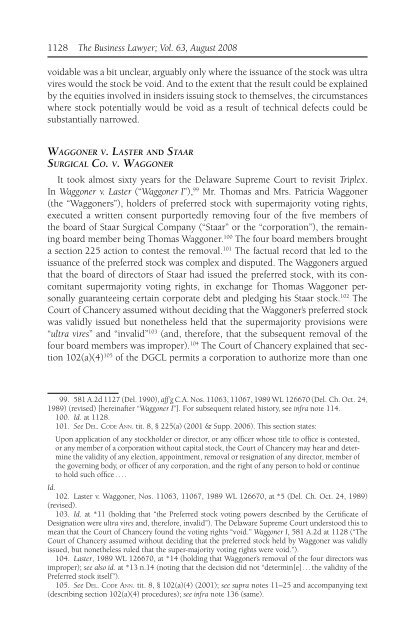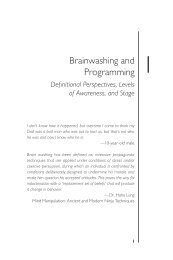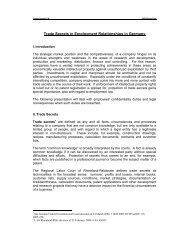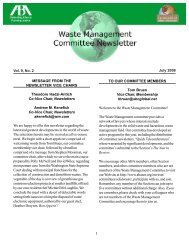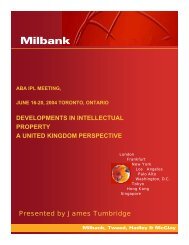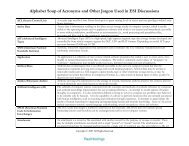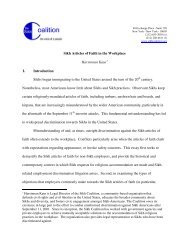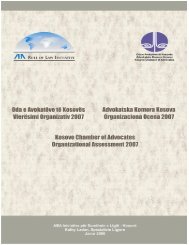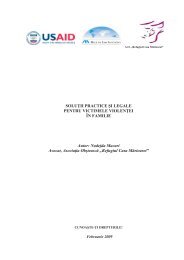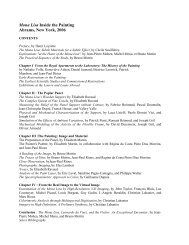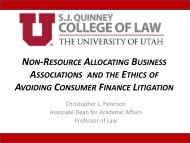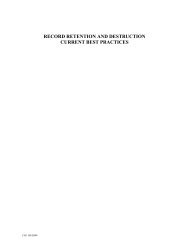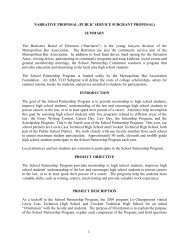Curing Defects in Stock Issuances - American Bar Association
Curing Defects in Stock Issuances - American Bar Association
Curing Defects in Stock Issuances - American Bar Association
You also want an ePaper? Increase the reach of your titles
YUMPU automatically turns print PDFs into web optimized ePapers that Google loves.
1128 The Bus<strong>in</strong>ess Lawyer; Vol. 63, August 2008<br />
voidable was a bit unclear, arguably only where the issuance of the stock was ultra<br />
vires would the stock be void. And to the extent that the result could be expla<strong>in</strong>ed<br />
by the equities <strong>in</strong>volved <strong>in</strong> <strong>in</strong>siders issu<strong>in</strong>g stock to themselves, the circumstances<br />
where stock potentially would be void as a result of technical defects could be<br />
substantially narrowed.<br />
WAGGONER V. LASTER AND STAAR<br />
SURGICAL CO. V. WAGGONER<br />
It took almost sixty years for the Delaware Supreme Court to revisit Triplex.<br />
In Waggoner v. Laster (“Waggoner I”), 99 Mr. Thomas and Mrs. Patricia Waggoner<br />
(the “Waggoners”), holders of preferred stock with supermajority vot<strong>in</strong>g rights,<br />
executed a written consent purportedly remov<strong>in</strong>g four of the fi ve members of<br />
the board of Staar Surgical Company (“Staar” or the “corporation”), the rema<strong>in</strong><strong>in</strong>g<br />
board member be<strong>in</strong>g Thomas Waggoner. 100 The four board members brought<br />
a section 225 action to contest the removal. 101 The factual record that led to the<br />
issuance of the preferred stock was complex and disputed. The Waggoners argued<br />
that the board of directors of Staar had issued the preferred stock, with its concomitant<br />
supermajority vot<strong>in</strong>g rights, <strong>in</strong> exchange for Thomas Waggoner personally<br />
guarantee<strong>in</strong>g certa<strong>in</strong> corporate debt and pledg<strong>in</strong>g his Staar stock. 102 The<br />
Court of Chancery assumed without decid<strong>in</strong>g that the Waggoner’s preferred stock<br />
was validly issued but nonetheless held that the supermajority provisions were<br />
“ultra vires” and “<strong>in</strong>valid” 103 (and, therefore, that the subsequent removal of the<br />
four board members was improper). 104 The Court of Chancery expla<strong>in</strong>ed that section<br />
102(a)(4) 105 of the DGCL permits a corporation to authorize more than one<br />
99. 581 A.2d 1127 (Del. 1990), aff’g C.A. Nos. 11063, 11067, 1989 WL 126670 (Del. Ch. Oct. 24,<br />
1989) (revised) [here<strong>in</strong>after “Waggoner I”]. For subsequent related history, see <strong>in</strong>fra note 114.<br />
100. Id. at 1128.<br />
101. See DEL. CODE ANN. tit. 8, § 225(a) (2001 & Supp. 2006). This section states:<br />
Upon application of any stockholder or director, or any offi cer whose title to offi ce is contested,<br />
or any member of a corporation without capital stock, the Court of Chancery may hear and determ<strong>in</strong>e<br />
the validity of any election, appo<strong>in</strong>tment, removal or resignation of any director, member of<br />
the govern<strong>in</strong>g body, or offi cer of any corporation, and the right of any person to hold or cont<strong>in</strong>ue<br />
to hold such offi ce . . . .<br />
Id.<br />
102. Laster v. Waggoner, Nos. 11063, 11067, 1989 WL 126670, at *5 (Del. Ch. Oct. 24, 1989)<br />
(revised).<br />
103. Id. at *11 (hold<strong>in</strong>g that “the Preferred stock vot<strong>in</strong>g powers described by the Certifi cate of<br />
Designation were ultra vires and, therefore, <strong>in</strong>valid”). The Delaware Supreme Court understood this to<br />
mean that the Court of Chancery found the vot<strong>in</strong>g rights “void.” Waggoner I, 581 A.2d at 1128 (“The<br />
Court of Chancery assumed without decid<strong>in</strong>g that the preferred stock held by Waggoner was validly<br />
issued, but nonetheless ruled that the super-majority vot<strong>in</strong>g rights were void.”).<br />
104. Laster, 1989 WL 126670, at *14 (hold<strong>in</strong>g that Waggoner’s removal of the four directors was<br />
improper); see also id. at *13 n.14 (not<strong>in</strong>g that the decision did not “determ<strong>in</strong>[e] . . . the validity of the<br />
Preferred stock itself ”).<br />
105. See DEL. CODE ANN. tit. 8, § 102(a)(4) (2001); see supra notes 11–25 and accompany<strong>in</strong>g text<br />
(describ<strong>in</strong>g section 102(a)(4) procedures); see <strong>in</strong>fra note 136 (same).


